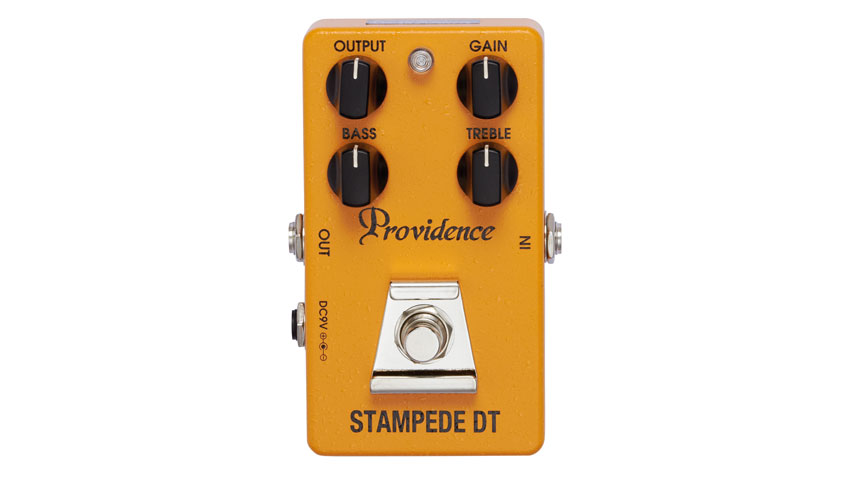MusicRadar Verdict
Superb 1980s-inspired rock distortion that never sounds small nor thin.
Pros
- +
Exceptional distortion. Lovely harmonics.
Cons
- -
The price.
MusicRadar's got your back
Providence is becoming increasingly well known for its professional-grade stompboxes. The brand's ethos begins with a quest for great sounds, as you'd expect, but continues with a focus on signal integrity and clarity of tone, both effected and bypassed.
"The price of entry is high, but the reward is no-compromise tone and reliability"
The price of entry is high, but the reward - as far as players such as Matt Schofield, Steve Lukather, Scott Henderson and Carl Verheyen are concerned - is no-compromise tone and reliability. Here, we have the latest box to emerge from Providence HQ.
This yellow distortion box is a completely different beast to the similarly named (red) Stampede OD. In addition to output and gain pots, you get separate bass and treble knobs for better EQ adjustment than a single tone pot. Providence staples such as single-contact true bypass switching (SCT) and a double-contact grounding circuit (DCG) are included.
That may sound very fancy, but the former simply means your signal is only passing through one switch contact when it's bypassed - in many true bypass pedals it passes through two. Whether you can hear the difference is a moot point, but there's no doubt that there's exceptional fidelity when bypassed.
DCG, meanwhile, means there are two ground connections on the output jack to ensure the plug is held firmly, with no danger of any loose connections and resulting extraneous noise. It may well be overkill for most users, though.
Also worth a mention is the power supply circuit common to both the SOV-2 and this Stampede DT. According to Providence, the circuit ups the battery's nine-volt output to provide a wider dynamic range. Anyone who has pedals that run on 18 volts will know all about the benefits of that: a bigger sound right across the frequency range. Perhaps as a result, its current draw (20mA) is over twice that of most 'normal' distortion pedals.
Sounds
"Where a classic overdrive might have a rounder, smoother texture, this is harder and more aggressive, with a singing midrange"
The Stampede DT immediately has an aggressive, biting edge to its distortion. It's not soupy and raspy like fuzz, but where a classic overdrive might have a rounder, smoother texture, this is harder and more aggressive, with a singing midrange that finds its voice most obviously through strongly pronounced second-order harmonics that help pinches and squeals leap from the guitar.
If you've ever brandished a mid-80s Charvel in anger, running through anything from Mötley Crüe to Eat 'Em And Smile-era Vai, you'll simply love it. It sounds bigger, fuller and fatter than a Boss DS-1, for example, and while the distortion keeps its edge, it never sounds harsh.
At £216, the Stampede OD makes a confident claim to be among the best post-Boss DS-1 pedals ever, outclassing the modern version of that staple - by some margin - in every respect. For an immense, 80s-inspired hard-rock distortion, it's simply superb.
“Built from the same sacred stash of NOS silicon transistors and germanium diodes, giving it the soul – and snarl – of the original”: An octave-fuzz cult classic returns as Jam Pedals resurrects the Octaurus
What’s the buzz? Meet Yellowjacket, Cherry Audio's recreation of EDP’s trend-setting Wasp from 1978
“A fabulous trip through all eight songs by 24 wonderful artists and remixers... way beyond anything I could have hoped for”: Robert Smith announces new Cure remix album










